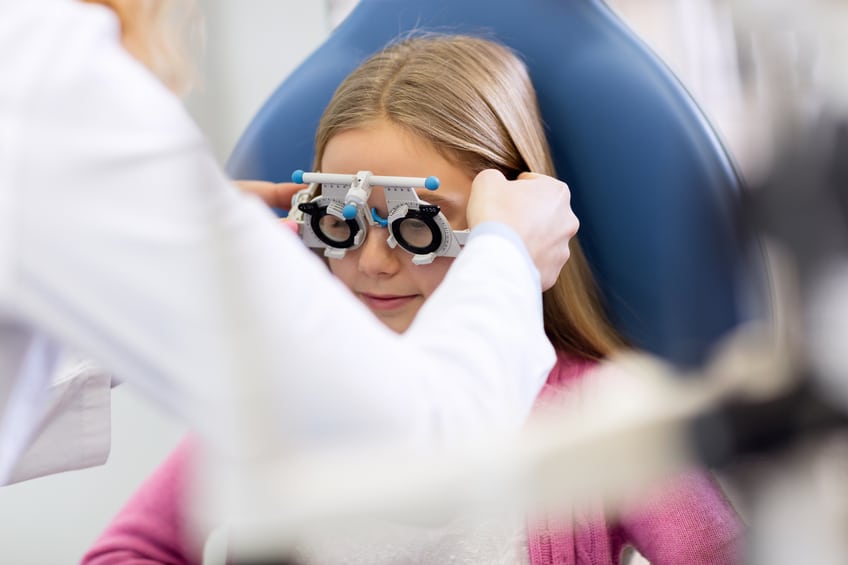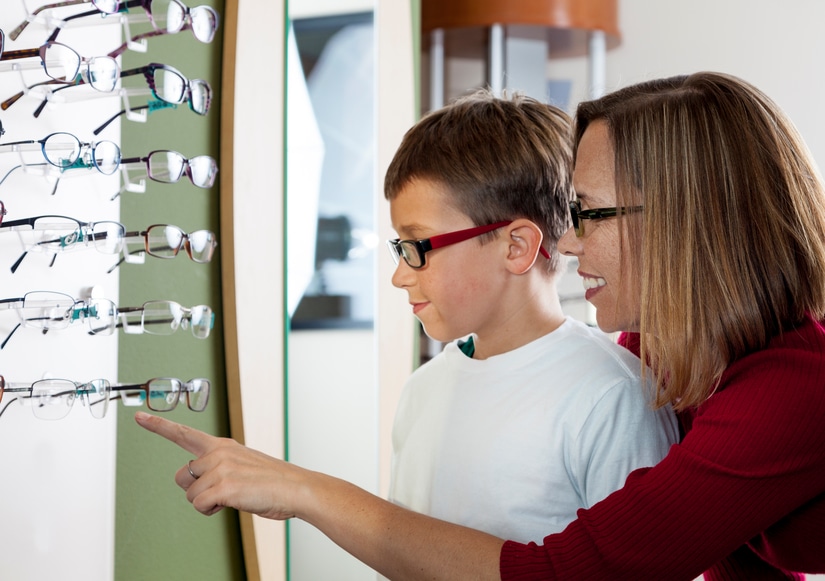
How Vision Affects Learning
Good vision is directly related to learning. Research has shown that 80% of what children learn in school is through visual presentation and when they cannot see a book or blackboard clearly, they struggle to reach their academic potential. The most common visual problems in children are refractive errors like farsightedness, nearsightedness and astigmatism, which are easily corrected with eyeglasses or contact lenses. In some cases, there may be less obvious problems at work with eye function and the way visual information is processed by the brain.
Learning Problems and Vision
While problems with learning related to poor vision are not learning disabilities, which are the result of dysfunction, injury or perceptual issues in the brain, vision problems can contribute to struggles in learning and can co-exist with learning disabilities. This is why it is important to take a team approach to solving a child's academic struggles by bringing parents, teachers, school staff and an eye doctor together for an evaluation. Finding all the causes at the root of the learning problem will allow for proper treatment.
Child Vision Problems That Affect Learning
The process of vision starts with the eyes and ends with the brain. Learning problems related to vision are categorized into three types: Two types are related to visual input. The third type is related to how the brain processes visual information.
- Refractive issues and general eye health. Astigmatism, farsightedness and nearsightedness are common visual acuity problems that can be tested by using an eye chart. Some children may also have low vision or other aberrations that are related to eye health.
- Functional eye issues. This relates to how well the eyes work together in regard to focus and fine movements, which are important for reading. Deficits in this area often manifest as headaches, blurred vision and eye strain. Another condition called convergence insufficiency may be present, preventing the eyes from finding a comfortable alignment during reading or other close-vision tasks.
- Visual perception issues. A large part of learning is understanding what has been seen and comparing it to information that is already stored in the brain. An example of this is word recognition and the ability to form a mental picture from it.
A typical eye exam will only address problems in the first category. An optometrist who has had special training in children's vision problems will provide an extensive examination that pinpoints perceptual and functional issues that affect learning.
Color blindness is not a vision-related learning problem, but it can hamper a child's ability to participate in color-matching activities in class. Children should be tested for color blindness before starting kindergarten.
Symptoms of Vision Problems
If a child displays any of the following symptoms in combination with learning problems, parents should immediately schedule testing.
- Eye strain with headaches
- Double or blurred vision
- Avoidance of close work and reading
- Placing a book very close to the face
- Reading slowly while using a finger
- Losing the reading place or short attention span
- Low retention of reading material
- Repeating, confusing or omitting words
- Tilting the head or using only one eye to read
- Rubbing the eyes often and blinking excessively
- Underdeveloped hand and eye coordination
- Crossed eyes or eyes that do not move uniformly
- Not keeping up academically or socially with the rest of the class
Should a comprehensive evaluation does not reveal a learning-related visual problem, it is possible that a learning disability, such as dyslexia, is present. A child may also have an attention-deficit or autism-spectrum disorder that is interfering in the ability to learn. These issues should be addressed by education and behavioural specialists.

Treatment Strategies
Treatment of vision-related learning problems is done by prescribing eyeglasses that are worn all the time or just for certain tasks such as reading. A child will need time to adjust to glasses and parents, teachers and others in the child's life should encourage the child to wear them consistently.
Vision therapy is the treatment of choice for binocular vision issues such as convergence or accommodate insufficiency. It can be considered physiotherapy for the eyes where a professional trains them to work more efficiently as a team to reduce the strain associates with vision related learning issues. Vision therapy is a specialized service offering, not available at many optometrist offices, however the optometrists at Vision By Design have completed additional training to able to provide vision therapy.
If a child is already attending special education classes to address a learning disability, it is very important that teachers, eye doctors and parents work as a team to ensure the child's success. It may be possible to combine remedial learning with vision therapy to allow the child to quickly catch up with peers.
In addition, children struggling with learning problems may have low self esteem, depression or anxiety because they feel different from other kids. They may also have to endure teasing if they begin wearing glasses. Strong emotional support from the family and school will help with adjustment issues. Parents should realize that a child with a learning problem, whether visual or not, is still very intelligent and simply processes information in a different way.
Contact us to schedule a comprehensive eye exam for your child.